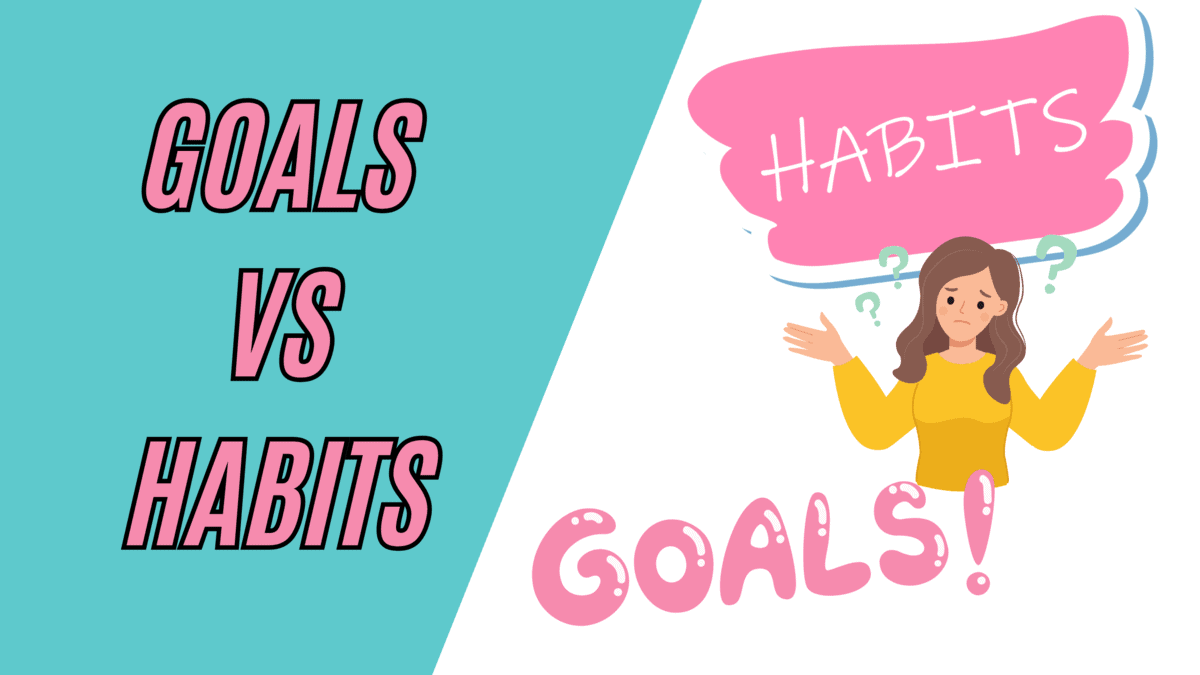Do you think 4 different levels of goal setting is overkill? I mean who has time for annual, quarterly, monthly, and weekly goals, right?
Wrong.
Quarterly goal setting is only 20 minutes of your life, 4x per year to keep you on track with your long-term goals. And it seriously leveled up our progress when we started doing it because it’s so powerful to check in and make sure you’re still aligned with your annual goals.
It’s really easy to set a goal for the year and then 12 months later realize you haven’t even slightly moved the needle, or that goal isn’t actually aligned with what you want to achieve anymore.
Enter your quarterly check-in and goal-setting session.
If you haven’t already, check out our article on annual goal setting before reading this one to make sure our top-down approach definitely makes sense.
Why Set Quarterly Goals?
Setting quarterly goals isn’t necessarily about setting new goals. It’s about alignment with the bigger picture and the bigger moves you want to make over the long term.
3 months is long enough to make a significant impact on your life but not too long that you lose touch with your focus. Not to mention that it’s the perfect amount of time to break your annual goals up into 4 equal, manageable-sized milestones.
How to Set and Review Quarterly Goals
After you’ve set your annual goals, it’s a natural next step to break the year into four quarters and start working on your Q1 goals straight away.
Before we get into the detail, our biggest tip to start off is to put your quarterly review in your calendar now so you don’t forget. It’s so easy to get tied up in your day-to-day life and forget to take a step back and look at the bigger picture.
Okay, now let’s jump into setting your quarterly goals step-by-step so you can start working on them right now:
Step 1: Zoom Out – Look at the Big Picture
Ask yourself:
- Are my long-term goals still in line with my lifestyle and where I’m heading?
- Has there been any significant changes in my life in the past 3 months that mean my goals need adjusting?
Remember, goals are fluid and ever-evolving. Don’t get too hung up on having to change them.
For example: In January 2022 our biggest goal was to grow to 6-figures and shorter-term goals for the quarter reflected that. But, by February we’d booked a one-way flight to Bali, and hitting that 6-figure milestone just wasn’t a priority anymore. So when March came around and it was time to review our goals for Q2, they looked completely different.
Once you’re happy that you’re still on the right track and you’ve still got the right long-term goals in place, it’s time to move on to step 2.
Step 2: Reflection – Review the Past 3 Months
Now it’s time to reflect on the past 3 months in more detail and assess how you’ve been performing against your long-term goals.
For this step, it’s best to take a look at each goal individually and determine:
- Are you on track and moving the needle as expected?
- Are you surpassing expectations and are going to hit your goal early?
- Are you falling behind, and if so, why?
If you are on track or surpassing your goals then great, carry on doing what you’re doing, and keep up the good work.
But, if you’re falling behind you need to dig into why this is happening:
- Do you need to aim higher with your monthly or weekly goals to pick up the pace?
- Did you set yourself up for failure with unrealistic expectations?
It’s okay to scale back if you genuinely need to or if a goal has become less of a priority. Don’t keep setting yourself up to fail or you’ll end up in an unnecessary cycle of guilt.
Step 3: Look Forward – Set Your Goals for the Next 3 Months
Now it’s time to set your goals for the next 3 months based on your previous quarter’s performance and any upcoming milestones.
If you’re on track with your long-term goals, then keep doing what you’ve been doing for the past 3 months.
If you’re surpassing targets, then give yourself a round of applause and carry on! Remember goals evolve. If it’s realistic to do so, why not set the bar a little higher?
If you’re falling behind, then you need to apply more pressure in the upcoming quarter to get back on track. This can be achieved by increasing the intensity of your shorter-term monthly and weekly objectives.
But, it’s super important to take a whole view of the quarter and reprioritize if you need to.
Maybe you:
- Have a work appraisal coming up
- Have a client retainer coming up for renewal
- Signed up to run a marathon
- Planned to attend a big networking event to meet potential new clients
Any big events like that can change your priorities for the quarter. If you’ve signed up for a marathon then you need to train, right? So, even though one of your goals is to land 3 clients every quarter to hit your annual revenue goal, maybe you need to take your foot off the gas this quarter to prioritize time for your marathon training.
That doesn’t mean you’re failing or falling behind! It just means next quarter, when the marathon is over, you refocus and reprioritize again.
Step 4: Make it Official – Write Down Your Goals
The physical act of writing down your goals is so underestimated. It works wonders for making them really sink in and mean something.
Be sure to write down your goals with clarity, making sure they are SMART and keep them handy for when you do your monthly and weekly check-ins. Using a physical planner is a great way to keep them on hand and easily accessible for reference.
The physical planner that Emma is using right now is the yearly horizontal planner by Inspired Stories.
Next up in the goal-setting series is how to set your monthly goals.




